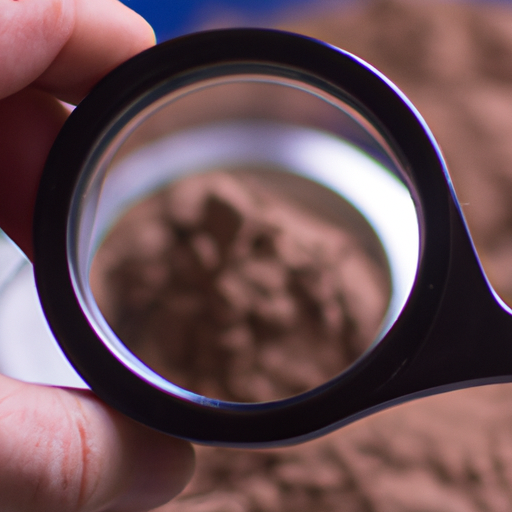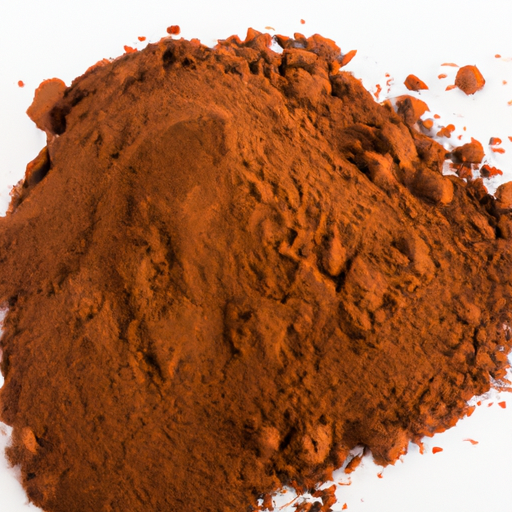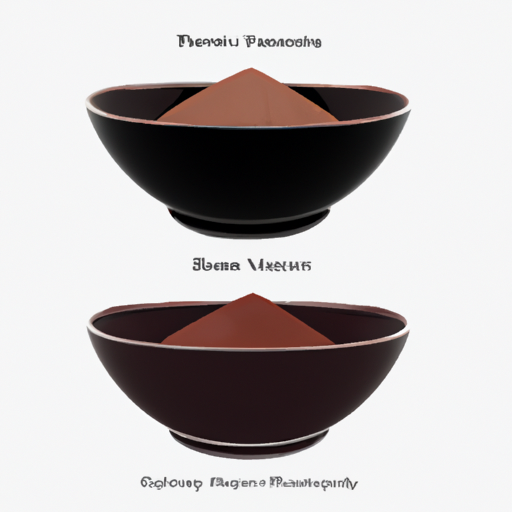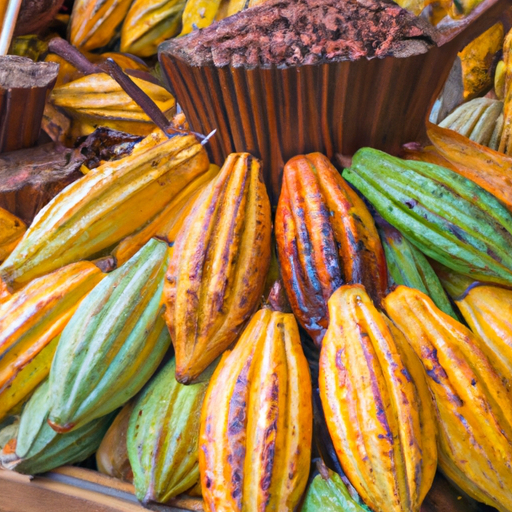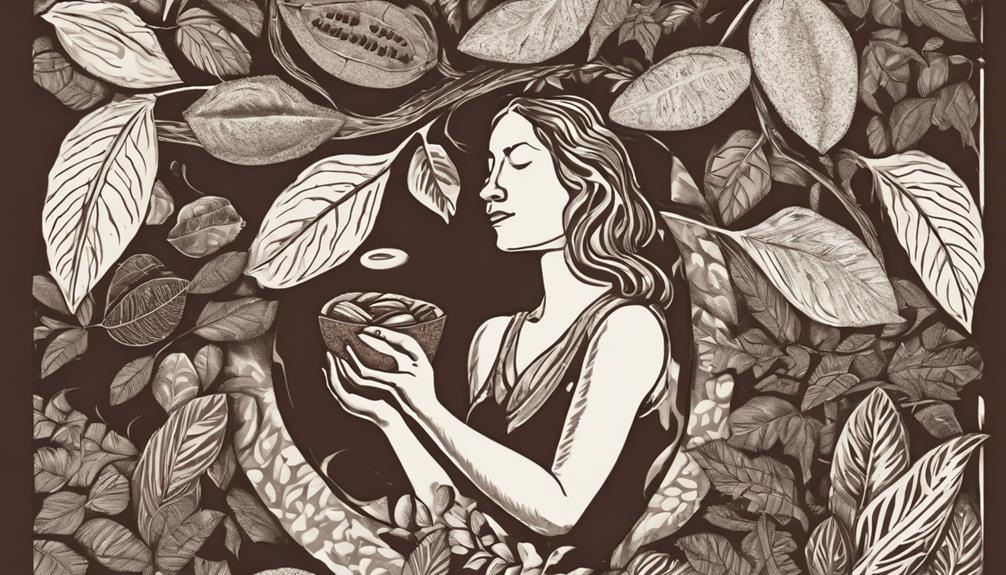In this article, I will explore the amount of magnesium present in one ounce of raw cacao. Magnesium is a vital mineral that is important for many bodily functions, including bone and muscle health, as well as cardiovascular well-being. Knowing the recommended daily magnesium intake and the specific amount in raw cacao can help us make better decisions about our diet and health.
So, how much magnesium is actually in one ounce of raw cacao? Well, you’ll be pleased to know that raw cacao is a rich source of this important mineral. In fact, one ounce of raw cacao contains approximately 64 milligrams of magnesium. This is around 16% of the recommended daily intake for adults.
Magnesium is particularly important for athletes and individuals who engage in regular physical activity, as it helps to relax and contract muscles, aids in energy production, and supports proper nerve function. It also plays a role in regulating blood pressure and maintaining a healthy heart.
Aside from magnesium, raw cacao is also packed with other essential nutrients. It is a good source of iron, which is necessary for the production of red blood cells and the prevention of iron-deficiency anemia. Raw cacao is also rich in antioxidants, which help to protect the body against oxidative stress and reduce the risk of chronic diseases.
Incorporating raw cacao into your diet is easy and delicious. You can add it to smoothies, sprinkle it on top of yogurt or oatmeal, or even use it as a substitute for regular cocoa powder in baking recipes. Just remember to consume it in moderation, as raw cacao is still high in calories and should be enjoyed as part of a balanced diet.
In conclusion, one ounce of raw cacao contains approximately 64 milligrams of magnesium, providing around 16% of the recommended daily intake for adults. This superfood is not only a delicious alternative to regular chocolate, but it also offers a wealth of health benefits. So, go ahead and indulge in some raw cacao to boost your magnesium intake and support your overall well-being.
Key Takeaways
- One ounce of raw cacao contains about 64 milligrams of magnesium.
- This amount of magnesium in raw cacao is approximately 16% of the recommended daily intake for adults.
- Magnesium plays a crucial role in energy production, muscle relaxation, and cardiovascular health.
- Choosing high-quality raw cacao products with minimal processing and no additives ensures optimal magnesium intake.
The Nutritional Content of Raw Cacao
Get ready to indulge in the nutritional goodness of raw cacao as we explore its mouthwatering magnesium content in just 1 oz!
Raw cacao is not only a delicious treat but also a great source of essential nutrients. In terms of magnesium content, 1 oz of raw cacao contains approximately 64 milligrams of this mineral.
Magnesium plays a vital role in various bodily functions, including energy production, muscle and nerve function, and maintaining a healthy immune system. It also helps with magnesium absorption, ensuring that our bodies can effectively utilize this mineral.
However, it’s important to note that excessive consumption of raw cacao can lead to potential side effects, such as digestive issues and increased heart rate due to its caffeine content.
Now, let’s delve into the benefits that magnesium provides for our bodies.
Magnesium Benefits for the Body
Magnesium has numerous benefits for the body. It plays a crucial role in energy production, being involved in over 300 enzymatic reactions. It is needed for the synthesis and breakdown of ATP, the main energy molecule in our cells.
In addition to its role in energy production, magnesium is essential for proper muscle function and relaxation. It helps regulate muscle contractions and supports the normal functioning of our muscles.
Furthermore, magnesium is important for heart health. It helps maintain a regular heartbeat and supports the overall cardiovascular system. It aids in the relaxation of blood vessels and helps prevent hypertension.
Overall, magnesium is a vital mineral that provides various benefits for the body, including energy production, muscle function, and heart health.
Role of Magnesium in Energy Production
With its magical powers, magnesium ignites the fiery spark of energy production within our bodies. Magnesium plays a crucial role in energy metabolism, converting food into a usable form of energy called ATP (adenosine triphosphate).
Here are five key ways magnesium contributes to energy production:
- Magnesium activates enzymes involved in ATP synthesis, enhancing the efficiency of energy production.
- It plays a vital role in the breakdown of glucose, the primary fuel for energy production.
- Magnesium supports the function of mitochondria, the powerhouses of our cells responsible for ATP production.
- It helps regulate calcium levels, which is essential for muscle contraction and energy production.
- Adequate magnesium levels promote better sleep quality, as it aids in the production of neurotransmitters that regulate sleep.
Magnesium deficiency can disrupt energy production and have a detrimental impact on overall health. Insufficient magnesium levels can lead to fatigue, weakness, and reduced physical performance.
Transitioning into the subsequent section about magnesium’s impact on muscle function and relaxation, it is crucial to understand how magnesium’s role in energy production extends beyond just powering our bodies.
Magnesium’s Impact on Muscle Function and Relaxation
Feeling tense and exhausted? Let magnesium work its magic on your muscles, promoting relaxation and restoring your body’s natural balance.
Magnesium plays a crucial role in muscle function and relaxation. It helps regulate calcium levels, which are essential for muscle contractions and releases. By ensuring the proper balance of calcium and magnesium, muscles can contract and relax more efficiently, reducing the risk of muscle cramps and spasms.
Additionally, magnesium has been found to improve sleep quality by promoting deeper and more restful sleep. Adequate magnesium levels can also help alleviate symptoms of insomnia and restless leg syndrome. So, if you’re looking to unwind and improve your sleep, make sure to include magnesium-rich foods like raw cacao in your diet.
Speaking of diet, let’s now explore the importance of magnesium for heart health.
Importance of Magnesium for Heart Health
Boost your heart health by ensuring you have enough of this essential mineral in your diet. Magnesium plays a crucial role in maintaining a healthy heart. A deficiency in magnesium has been associated with an increased risk of cardiovascular problems such as high blood pressure, arrhythmias, and heart disease. Research suggests that magnesium supplementation can help lower blood pressure and improve overall heart function.
To illustrate the importance of magnesium for heart health, take a look at the table below:
| Food Source | Magnesium Content (per 1 oz) |
|---|---|
| Raw Cacao | 64 mg |
| Almonds | 76 mg |
| Spinach | 24 mg |
| Avocado | 15 mg |
As you can see, raw cacao is an excellent source of magnesium, providing 64 mg per ounce. Incorporating magnesium-rich foods like raw cacao into your diet can help prevent magnesium deficiency and support a healthy heart.
Now, let’s delve into the recommended daily intake of magnesium and its benefits for overall well-being.
Recommended Daily Intake of Magnesium
Is there a recommended daily intake of magnesium? Absolutely. Magnesium is an essential mineral that our bodies need to function properly.
The recommended daily intake of magnesium varies depending on age and gender. For adult men, the recommended daily intake is around 400-420 mg, while for adult women it is slightly lower at around 310-320 mg.
Incorporating magnesium-rich foods into your diet is a great way to meet your daily intake. Some excellent sources of magnesium include leafy green vegetables like spinach and kale, nuts and seeds such as almonds and pumpkin seeds, and whole grains like brown rice and quinoa.
But did you know that one ounce of raw cacao also contains a significant amount of magnesium? Let’s explore the magnesium content in one ounce of raw cacao in the next section.
Magnesium Content in One Ounce of Raw Cacao
Craving a sweet treat? Indulge in a piece of rich, dark chocolate because one ounce of raw cacao packs a surprising amount of the essential mineral magnesium. Magnesium plays a crucial role in our bodies, supporting over 300 biochemical reactions and contributing to overall health. It helps maintain normal muscle and nerve function, keeps the heart rhythm steady, and supports a healthy immune system. To give you a better idea of the magnesium content in raw cacao, here’s a table:
| Raw Cacao (1 oz) | Magnesium (mg) |
|---|---|
| 64 |
This natural source of magnesium can help combat magnesium deficiency, which is associated with various health issues. With its delicious taste and magnesium-rich content, raw cacao is a guilt-free way to satisfy your sweet tooth while boosting your magnesium intake. Moving on to other nutrients and health benefits of raw cacao…
Other Nutrients and Health Benefits of Raw Cacao
Indulging in a piece of rich, dark chocolate made from raw cacao can provide you with a multitude of other essential nutrients and health benefits that go beyond its delicious taste.
Raw cacao is not only a good source of magnesium, but it also offers various other nutrients that are important for our overall well-being.
For instance, raw cacao is known to have a positive impact on mental health due to its high content of flavonoids and antioxidants. These compounds have been shown to improve cognitive function and mood.
Additionally, raw cacao is packed with antioxidants, which help protect our cells from damage caused by free radicals.
Incorporating raw cacao into your diet can be a great way to boost your mental health and take advantage of its antioxidant properties.
Transitioning into the next section, let’s explore some simple ways to incorporate raw cacao into your daily routine.
Incorporating Raw Cacao into Your Diet
One simple way to incorporate the nutrient-rich goodness of raw cacao into your daily routine is by adding it to your morning smoothie or oatmeal. Raw cacao can add a rich, chocolatey flavor to your breakfast while providing you with a healthy dose of antioxidants, fiber, and essential minerals like magnesium.
In fact, one ounce of raw cacao contains about 64 milligrams of magnesium, which is approximately 16% of the recommended daily intake for adults.
Apart from breakfast, you can also use raw cacao in desserts like brownies, cookies, and energy balls. There are plenty of raw cacao recipes available that can satisfy your sweet tooth while still offering health benefits.
However, it’s important to keep in mind that raw cacao does contain caffeine and may not be suitable for everyone. Therefore, it’s essential to consider any precautions and considerations before incorporating raw cacao into your diet.
Precautions and Considerations
Be cautious when incorporating raw cacao into your diet as it contains a natural stimulant that may not be suitable for all individuals. While raw cacao has many potential health benefits, it is important to take certain precautions and consider the dosage recommendations. Here are some important points to keep in mind:
-
Start with small amounts: Raw cacao is potent and can have a strong effect on the body. It is best to start with small amounts and gradually increase the dosage if tolerated well.
-
Monitor your caffeine intake: Raw cacao contains caffeine, so if you are sensitive to caffeine or already consume other sources of it, be mindful of your overall intake.
-
Check for allergies: Some individuals may have allergies or sensitivities to cacao, so it is important to be aware of any adverse reactions.
-
Consult with a healthcare professional: If you have any underlying health conditions or are taking medications, it is always a good idea to consult with a healthcare professional before incorporating raw cacao into your diet.
Considering these precautions, it is important to choose high-quality raw cacao products. [Transition sentence to subsequent section about choosing high-quality raw cacao products].
Choosing High-Quality Raw Cacao Products
Ensure you’re getting the best quality cacao by looking for reputable brands that prioritize organic and fair-trade sourcing. Choosing organic cacao is important because it means that the cacao beans have been grown without the use of synthetic pesticides or fertilizers, which can negatively impact both the environment and your health.
Additionally, organic cacao is often processed with more care, preserving its natural flavors and nutrients. Understanding cacao processing methods is also crucial when selecting high-quality raw cacao products. Look for brands that use low-temperature processing techniques, such as cold-pressing or stone grinding, as these methods help to retain the beneficial compounds found in cacao.
By choosing organic cacao and being mindful of processing methods, you can ensure that you’re getting a product that is not only delicious but also nutritious.
Transitioning into the next section, let’s explore the conclusion and final thoughts on incorporating raw cacao into your diet.
Conclusion and Final Thoughts
To conclude, incorporating raw cacao into your diet can bring a rich and indulgent journey. It is not only a delicious treat but also a valuable source of nutrients, including magnesium. Magnesium plays a crucial role in various bodily functions, such as energy production, muscle relaxation, and cardiovascular health. By consuming raw cacao, you can conveniently boost your magnesium intake.
However, it’s important to note that the exact amount of magnesium in 1 ounce of raw cacao can vary depending on the specific product. To fully enjoy the benefits of this mineral, it’s recommended to choose high-quality raw cacao products that undergo minimal processing and are free from additives.
Incorporating raw cacao into your diet can be a delightful and nutritious way to support your overall well-being.
Frequently Asked Questions
What are some other sources of magnesium besides raw cacao?
Some other sources of magnesium include dark leafy greens like spinach and kale, nuts and seeds like almonds and pumpkin seeds, legumes like black beans and lentils, and whole grains like quinoa and brown rice. These sources provide numerous health benefits.
Can consuming too much magnesium have any negative effects on the body?
Consuming excessive magnesium can lead to magnesium toxicity, which can cause symptoms such as diarrhea, nausea, and abdominal cramping. It’s important to be mindful of our magnesium intake to avoid these negative effects on the body.
Are there any specific health conditions or medications that could interact negatively with magnesium consumption?
Interactions between magnesium and certain health conditions or medications can lead to potential side effects. It is important to consult with a healthcare professional to understand any specific risks or contraindications before consuming excessive amounts of magnesium.
How does the magnesium content in raw cacao compare to other types of chocolate?
When comparing the magnesium content, raw cacao is the winner! It has significantly more magnesium than milk chocolate, dark chocolate, and white chocolate. The processing of chocolate does affect its magnesium content.
Is there a recommended maximum daily intake of magnesium for adults?
There is a recommended maximum intake of magnesium for adults. It is important to note that magnesium offers several benefits for adults, including promoting healthy bones and muscles, regulating blood pressure, and supporting heart health.
What is the Amount of Magnesium in 1 oz of Raw Cacao?
Raw cacao contains a high magnesium content in cacao, making it a great source of this essential mineral. In just 1 oz of raw cacao, you can find approximately 64 milligrams of magnesium. Including raw cacao in your diet can help you meet your daily magnesium needs.
Conclusion
In conclusion, raw cacao is truly a hidden treasure of nature. It has the power to ignite a spark of vitality within our bodies due to its rich magnesium content. This nutrient supports our heart, muscles, and overall well-being. Like a key that unlocks our inner strength, incorporating raw cacao into our diet can add a sprinkle of magic to our daily routine.
However, it’s important to choose high-quality products and exercise caution when consuming raw cacao. Ensuring that we are getting the best quality will maximize the benefits we receive. So, let’s indulge in the wonders of raw cacao and let its enchanting goodness envelop us in a world of wellness.

